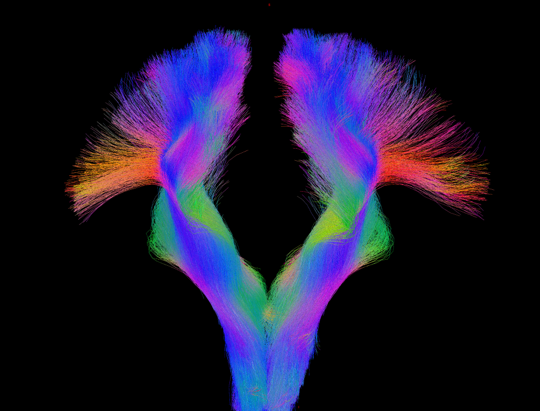Magnetic resonance cholangiography (MRCP) is an advanced medical imaging technique that allows detailed analysis of the bile ducts. It is very useful in diagnosing various diseases of the liver, gallbladder and pancreas. What does cholangiography look like in practice? When is it done? How should I prepare for it and are there any contraindications to performing it?
What is cholangiography?
Cholangiography is an advanced diagnostic procedure that uses magnetic resonance to produce detailed images of the bile ducts, gallbladder and pancreas. It is a key test in the diagnosis of gallstones, inflammation and tumours in the biliary system. It allows the precise localisation of gallstones, the assessment of inflammation of the bile ducts and gallbladder, and the detection of tumours.
The use of MR makes this a safe and painless examination, making it the procedure of choice for assessing the condition of the biliary tract, especially in cases that are unclear or difficult to diagnose.
In addition, MR cholangiography is important in the diagnosis of bile duct strictures and in assessing the condition of patients following biliary surgery. It also allows accurate assessment of bile flow, which is important in the diagnosis of liver and pancreatic disease. It is particularly useful in cases where traditional imaging techniques, such as ultrasound, do not provide sufficient information.
MRCP cholangiography – a non-invasive and safe alternative to ECPW and PTC
As a non-invasive imaging modality, magnetic resonance cholangiopancreatography (MRCP) is an important alternative to invasive procedures such as endoscopic retrograde cholangiopancreatography (ERCP) or percutaneous transhepatic cholangiography (PTC), which carry the risk of serious complications.
In addition, MRCP provides clear images without the need for contrast media and without exposure to ionising radiation, making the procedure safer and less stressful for the patient.
MRCP is also useful in assessing the effectiveness of biliary surgery, diagnosing chronic pancreatitis and detecting congenital anomalies. This technique is invaluable in the diagnosis of liver, pancreatic and biliary disease, allowing precise treatment planning.
Indications for cholangiography
MR cholangiography is indicated in a number of cases, including the diagnosis of gallstones, bile duct strictures, liver and pancreatic disease, and the assessment of post-operative conditions. Because of its precision, MR cholangiography is particularly useful in diagnosing subtle or complex cases where other diagnostic methods may not be sufficiently accurate.
Other indications for cholangiography include suspected biliary tract tumours, assessment of pancreatitis and diagnosis of autoimmune diseases of the liver and pancreas. It is also a valuable tool in the assessment of chronic liver disease and in pre- and post-operative investigations.
Preparation for MR cholangiography
To obtain reliable results, the patient must be properly prepared for MR cholangiography. Patients should follow the recommendations for diet and fluid intake prior to the examination. The patient should fast for 6 hours before the examination. It is important to inform the medical staff of any allergies, especially to the contrast media that may be used in some cases. The patient should also remove all metal objects, including jewellery, before the test to avoid interference with the imaging procedure.
Patients with diabetes or other chronic medical conditions should also inform the medical staff of these conditions before the examination. This is particularly important as certain medical conditions and medications may affect test results or require special precautions. Patients should also avoid heavy meals the day before the test to avoid adverse stomach reactions.
What does a cholangiogram look like and how long does it take?
MR cholangiography takes different amounts of time depending on the extent of the examination and the patient’s specific condition. During the examination, the patient lies on a moving table that is moved inside the scanner. Communication with the radiology technician is by intercom to ensure patient comfort. The examination is painless and the patient can return to normal activities immediately after the examination.
Depending on the extent of the examination, MR cholangiography can take from 15 minutes to over an hour. A contrast agent may be administered to the patient prior to the examination to increase the accuracy of the imaging, especially in the case of difficult diagnoses. The entire examination is monitored by specialists who ensure the patient’s comfort and safety at every stage of the procedure.
Contraindications to cholangiography
Although MR cholangiography is generally safe, there are certain contraindications. These include implanted electronic devices such as cardiac pacemakers, which can be affected by the strong magnetic field generated by the MR scanner. Patients with metal implants, such as heart valves, should consult a doctor before the scan. If the patient is pregnant, caution and consultation with the treating physician is advised, although there is no evidence that MR cholangiography is harmful during pregnancy.
Patients with renal failure or allergies to contrast media may also require special precautions. Although contrast media are rarely used in MR cholangiography, their use may be necessary in some cases, and their safety must always be carefully assessed by the doctor.
MR cholangiography, which combines advanced magnetic resonance technology with precise imaging of the biliary tract, is an important medical diagnostic tool. Its accuracy and non-invasiveness make it the preferred procedure in many cases, allowing effective and safe diagnosis and treatment planning.
